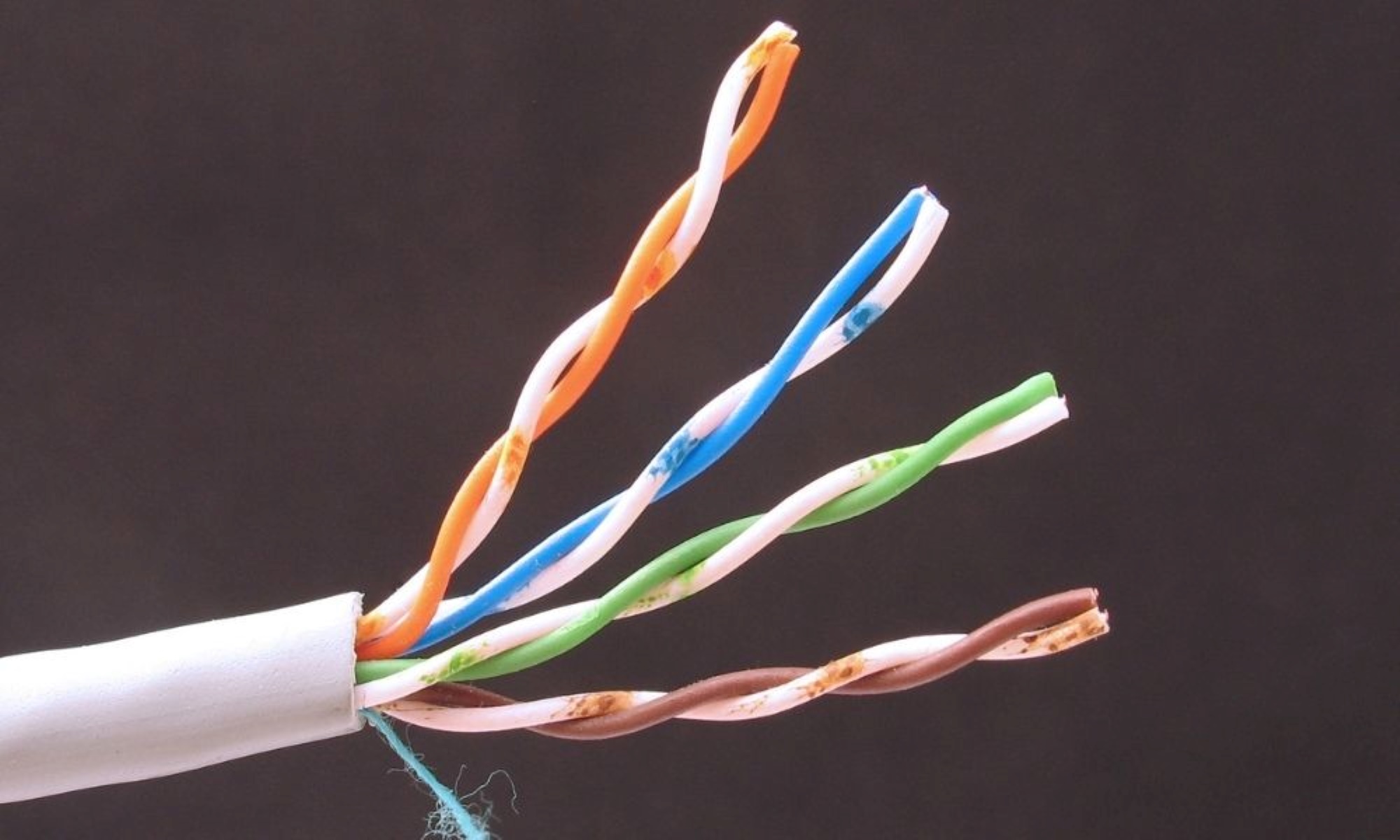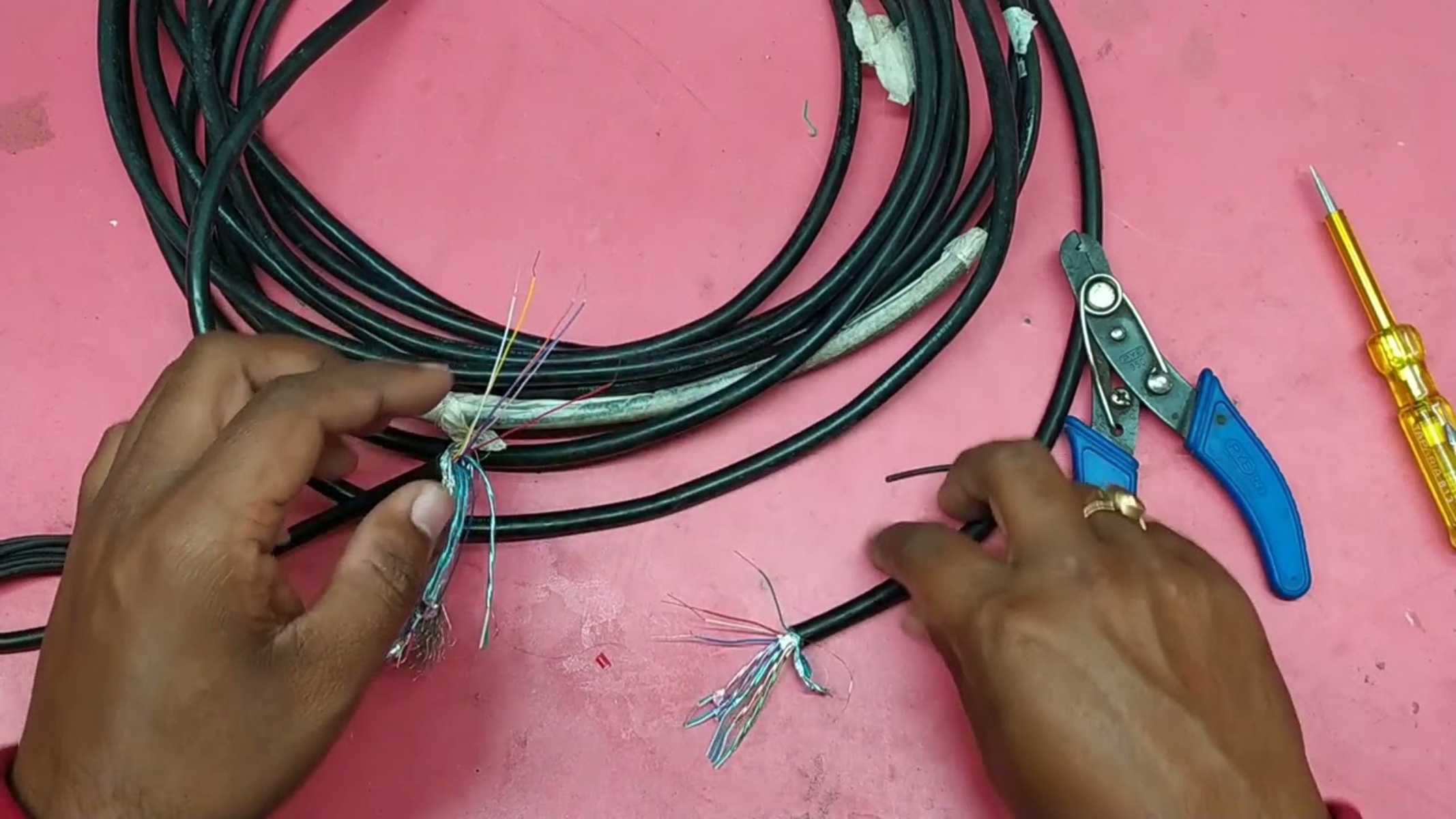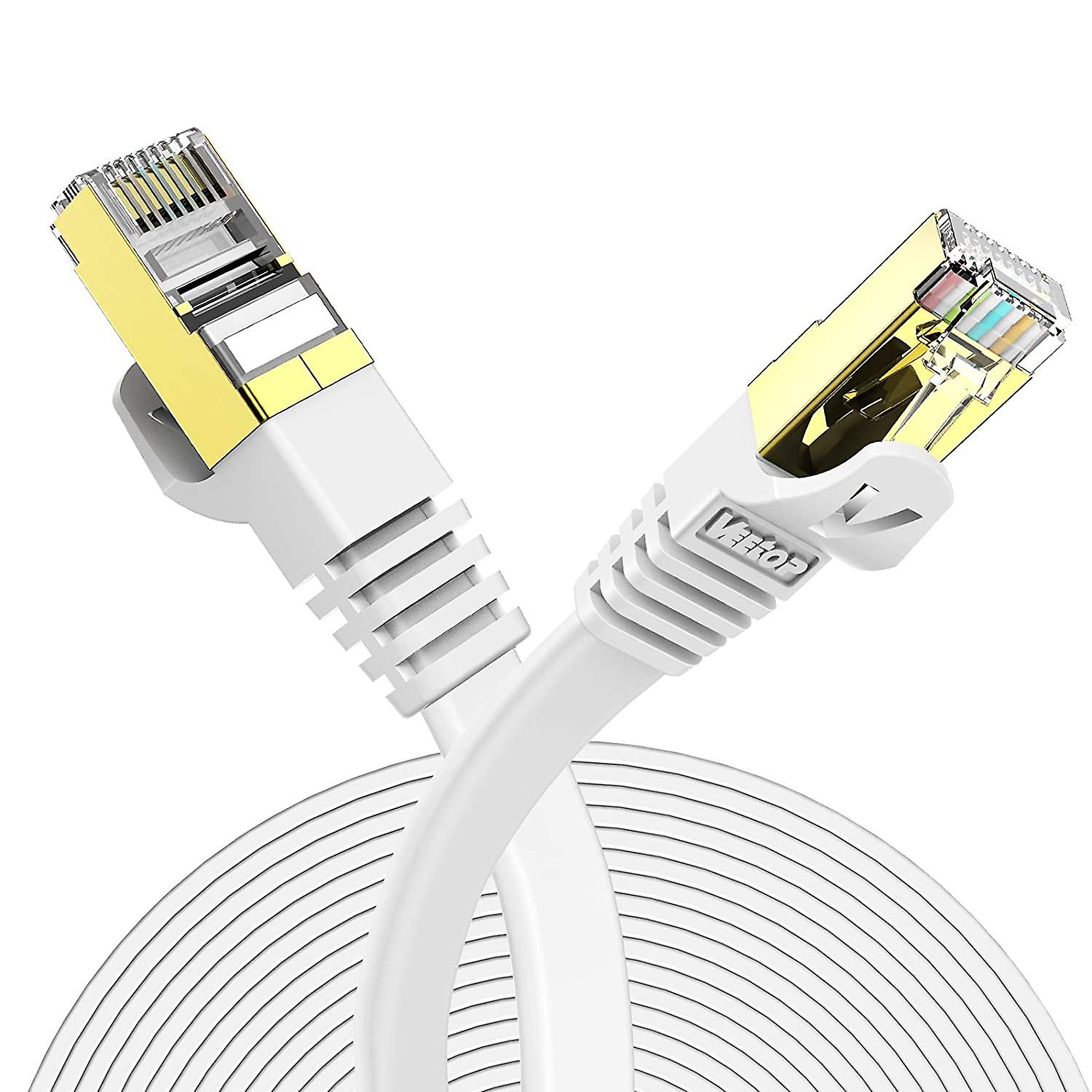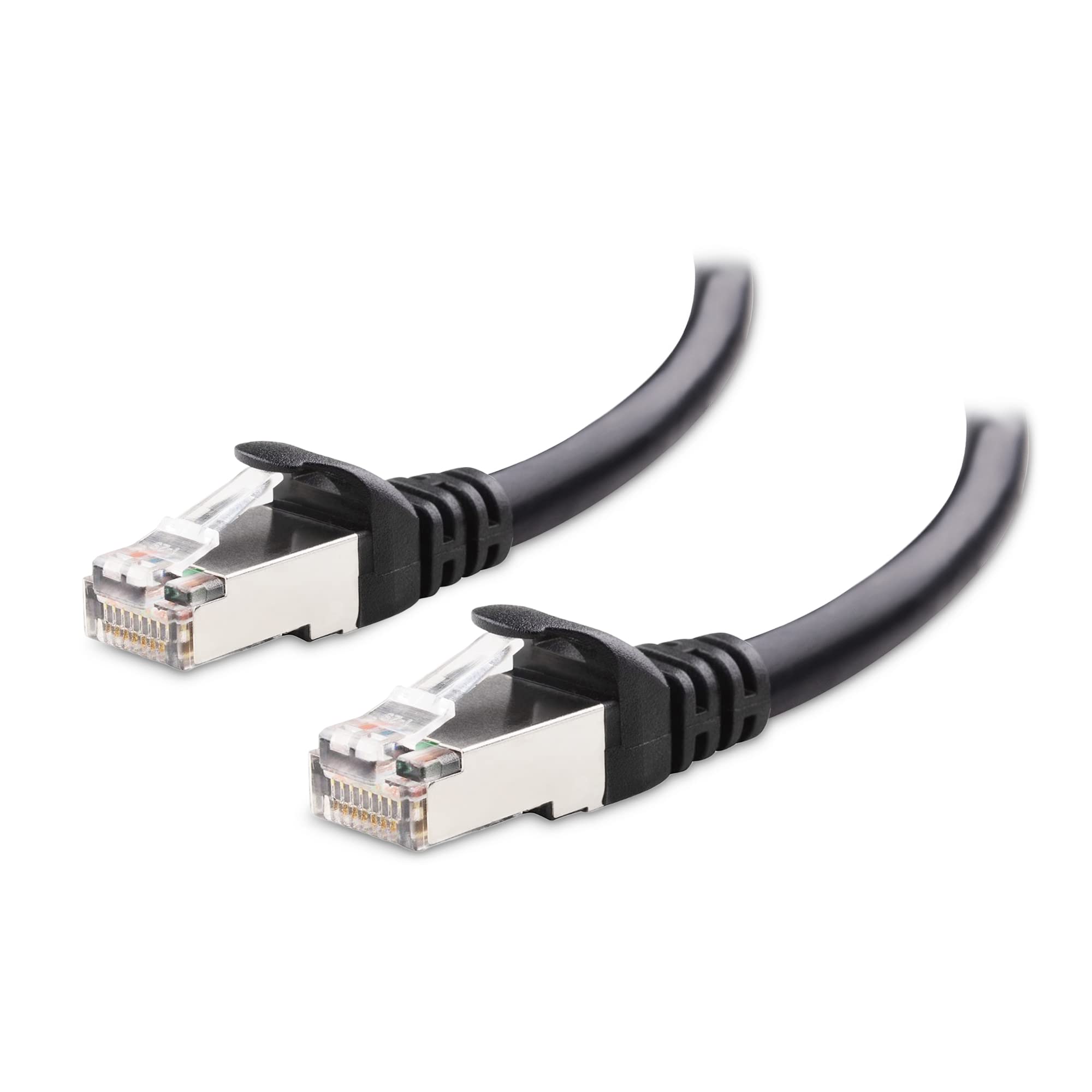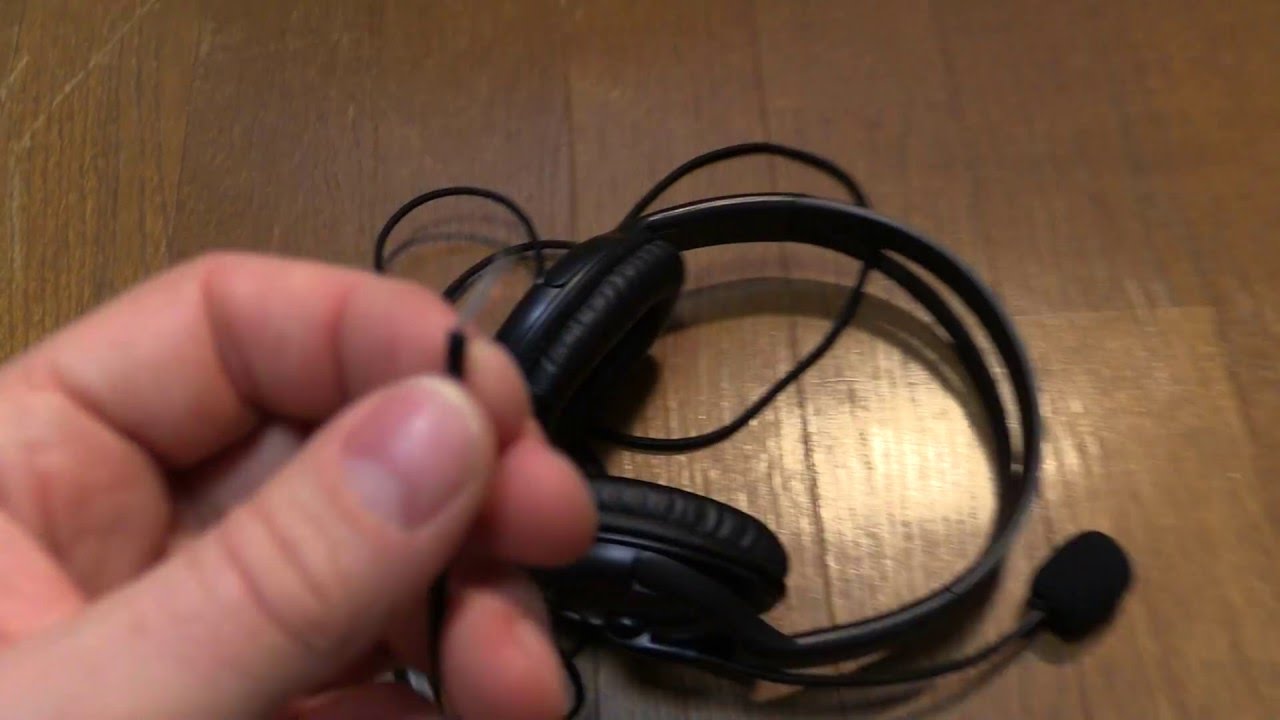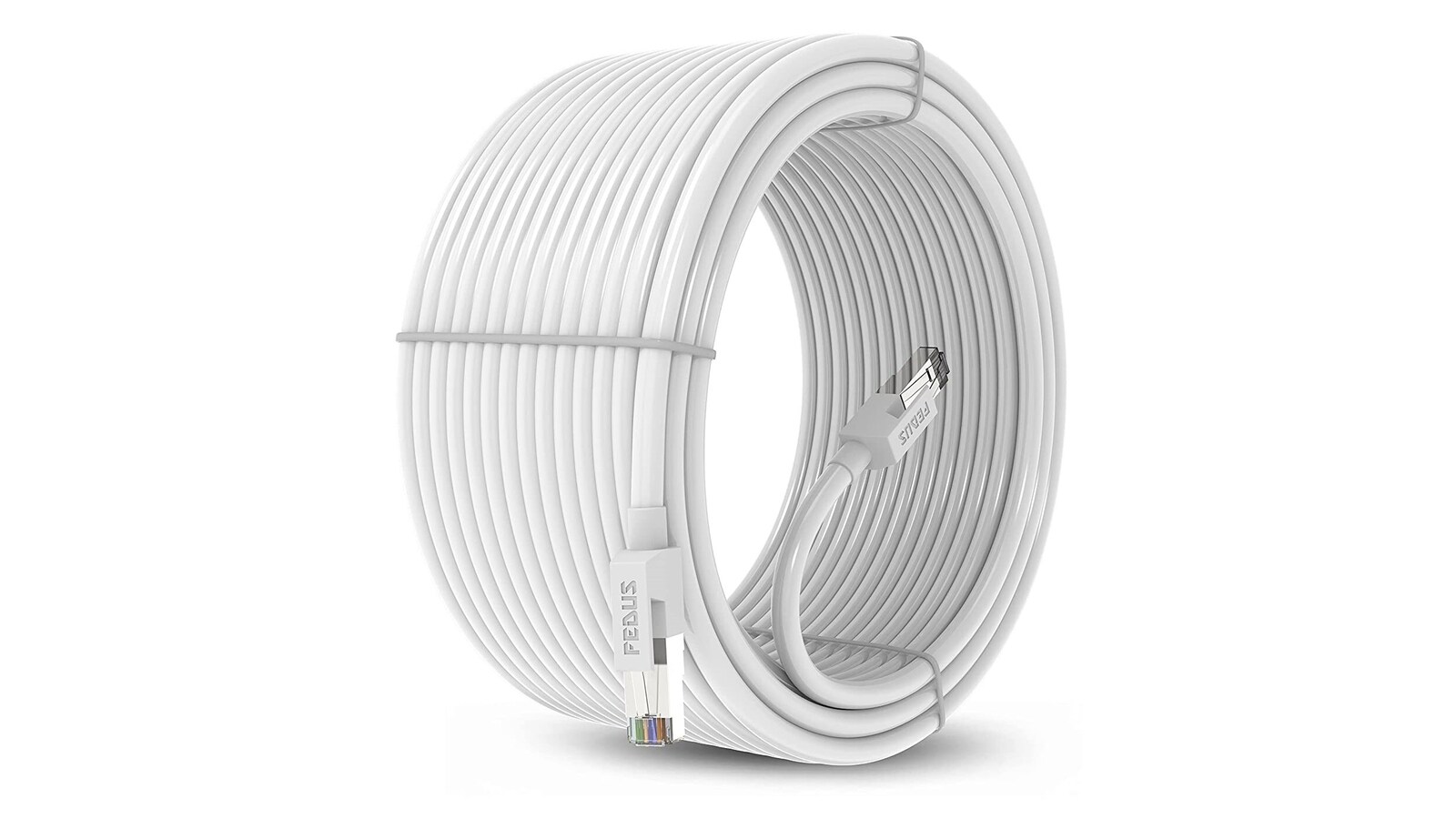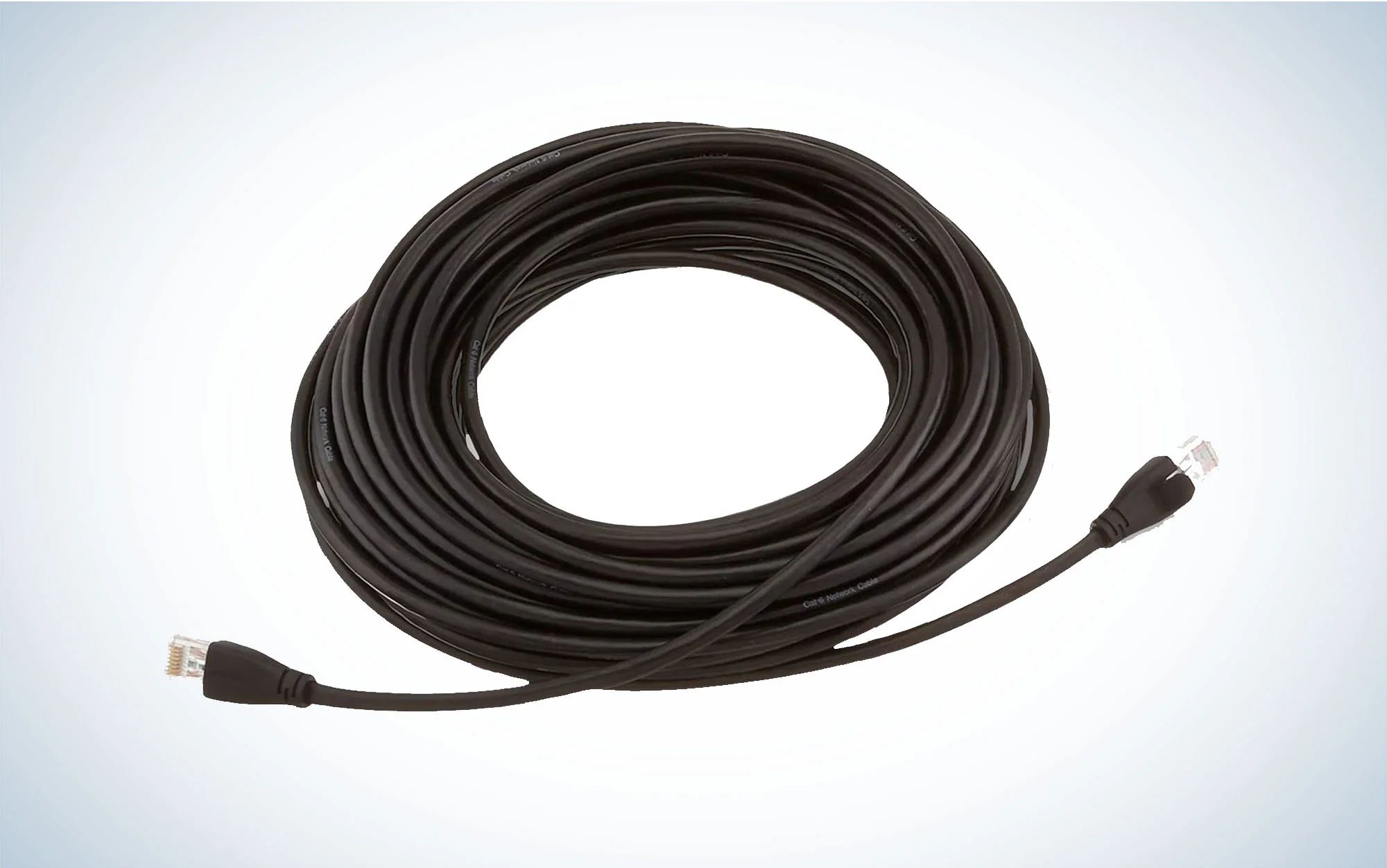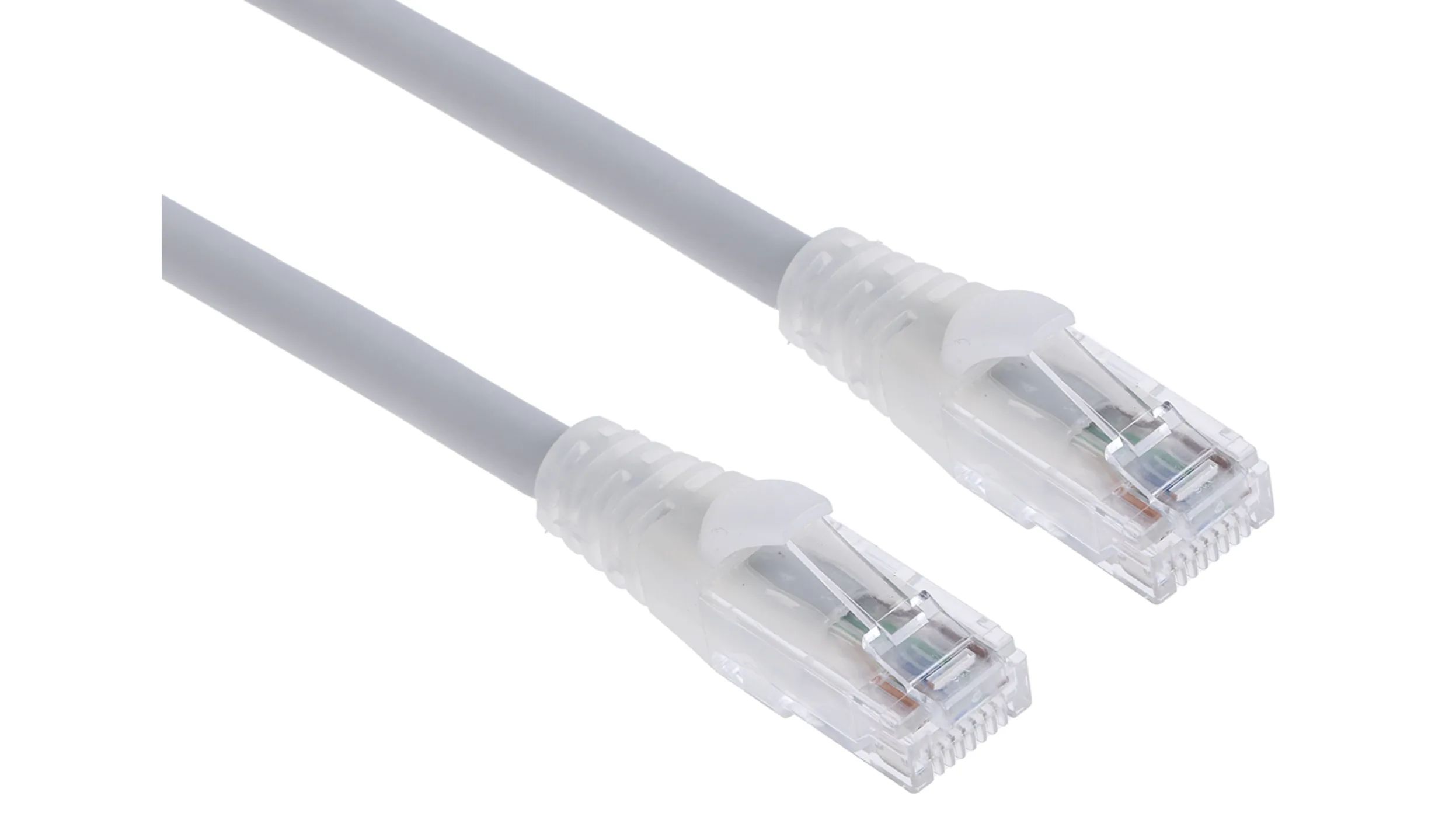Introduction
Welcome to the world of Ethernet cables, where seamless internet connections are made. In today’s technological era, having a reliable and efficient network connection is paramount. Ethernet cables play a vital role in establishing a stable and high-speed digital connection, whether it’s for home or professional use. However, there may be instances where you find yourself in need of splicing an Ethernet cable.
Splicing an Ethernet cable allows you to join two cables, extend the length, or repair a damaged cable. It may seem like a daunting task, but with the right tools and a little know-how, it can easily be accomplished. In this article, we’ll guide you through the process of splicing an Ethernet cable step by step, ensuring a successful and durable connection.
Before we dive into the practicalities, it’s important to understand what splicing actually entails. Splicing refers to the act of joining two or more cables together, connecting their wires to ensure seamless data transmission. When splicing an Ethernet cable, the objective is to create a secure connection that maintains the same data-transmitting capabilities as a standard cable.
So, why would you need to splice an Ethernet cable in the first place? Well, there are several scenarios that may require you to do so. It could be that you need to extend the reach of your existing cable to connect devices in distant locations. Alternatively, you might encounter a damaged Ethernet cable that needs repair. Whatever the situation, knowing how to successfully splice an Ethernet cable can save you time, money, and the hassle of buying new cables.
What is splicing?
Splicing is the process of joining two or more Ethernet cables together to create an uninterrupted connection. When cables are connected, the wires inside them need to be properly aligned and secured to ensure seamless data transmission.
There are different methods of splicing, including mechanical splicing and fusion splicing. Mechanical splicing involves using connectors or adapters to join the cables, while fusion splicing uses heat to melt the cables together.
When it comes to Ethernet cables, the most common method of splicing is using connectors. These connectors, also known as RJ-45 connectors, have slots where the wires from each cable are inserted and then crimped using a special tool. This ensures that the connection is secure and reliable.
It’s important to note that splicing an Ethernet cable should only be done when necessary. In ideal situations, Ethernet cables should be installed with lengths that match the requirements of the network setup. However, unforeseen circumstances such as relocation or cable damage may require splicing.
Proper splicing is essential to maintain the integrity and performance of the Ethernet cable. Any errors or misalignments during the splicing process can lead to a weak or unstable connection, resulting in slower data transfer speeds or even a complete network outage.
Additionally, it’s crucial to ensure that the cables being spliced are of the same category. Ethernet cables come in different categories, such as Cat 5e, Cat 6, and Cat 7, each with varying data transmission capabilities. Mixing cables of different categories can lead to compatibility issues and degraded network performance.
In summary, splicing is the process of joining Ethernet cables together to create a continuous and reliable connection. It involves aligning and securing the wires inside the cables using connectors or adapters. Proper splicing techniques and using cables of the same category are vital to ensure optimal network performance.
Why would you need to splice an Ethernet cable?
There are various situations where you might find yourself in need of splicing an Ethernet cable. Understanding these scenarios will help you determine when it’s necessary to perform this task and save you the cost and hassle of purchasing new cables.
One common reason to splice an Ethernet cable is when you need to extend the reach of your network. In larger homes or office spaces, the standard length of an Ethernet cable may not be sufficient to connect devices in distant locations. Instead of investing in a longer pre-made cable, splicing allows you to join two shorter cables together and create the desired length. This can help in situations where running a completely new cable is impractical or inconvenient.
Another scenario where splicing is required is when a cable becomes damaged. Over time, Ethernet cables can get bent, frayed, or even chewed by pets, leading to connectivity issues. Instead of replacing the entire cable, splicing can be a cost-effective solution. By cutting out the damaged section and attaching a new connector, you can repair the cable and restore its functionality.
Furthermore, in cases where you have excess cable length, splicing can clean up the installation and prevent cable clutter. Excess cable length can be unsightly and even pose a tripping hazard. By cutting and properly splicing the cable, you can customize the length to fit your specific needs and maintain a neat and organized setup.
Splicing an Ethernet cable can also be necessary when installing network equipment in challenging environments. For example, in outdoor installations or areas prone to moisture or extreme temperatures, using pre-made cables may not be feasible. Splicing allows you to create custom cables that are better suited for these conditions, using waterproof connectors and specialized cable types.
Whether it’s extending the reach, repairing a damaged cable, reducing clutter, or accommodating challenging environments, splicing an Ethernet cable provides a versatile solution for various networking needs. It gives you the flexibility to customize cable lengths and adapt to specific situations without the need for expensive replacements.
Tools and materials you will need
Before you start splicing an Ethernet cable, it’s essential to gather all the necessary tools and materials. Having the right equipment will ensure that the splicing process goes smoothly and the resulting connection is secure and reliable.
Here is a list of tools and materials you will need to splice an Ethernet cable:
1. Ethernet Cable
You will need the Ethernet cable that you intend to splice. Make sure the cable is in good condition and of the same category as the existing cables in your network setup.
2. RJ-45 Connectors
Get a set of RJ-45 connectors that match the category of your Ethernet cable. These connectors have slots where the wires from each cable will be inserted and crimped.
3. Cable Crimper
A cable crimper is an essential tool for securing the connectors onto the Ethernet cable. It allows you to crimp the connector, ensuring a tight and reliable connection.
4. Cable Cutter
A cable cutter will be needed to trim the excess cable length. Make sure you have a sharp and clean-cutting cable cutter to ensure accurate and precise cuts.
5. Cable Stripper
A cable stripper is used to remove the insulation from the Ethernet cable, exposing the individual wires inside. It ensures a clean and accurate strip without damaging the wires.
6. Wire Stripper
A wire stripper is required to remove the insulation from the individual wires within the Ethernet cable. It helps in preparing the wires for proper alignment and insertion into the connector slots.
7. Testing Tool
Having a testing tool, such as an Ethernet cable tester, is recommended to ensure that the spliced cable is functioning correctly. It allows you to verify the continuity and integrity of the connection.
Ensure that you have all these tools and materials ready before you start splicing the Ethernet cable. Having them at hand will make the process more convenient and ensure a successful splicing outcome.
Step 1: Prepare the cable
Before you start splicing an Ethernet cable, it’s crucial to properly prepare the cable for the splicing process. This involves inspecting the cable, determining the desired length, and making necessary markings for cutting.
Here are the steps to prepare the cable for splicing:
1. Inspect the cable
Thoroughly examine the Ethernet cable for any signs of damage, such as cuts, frays, or kinks. It’s important to ensure that the cable is in good condition and suitable for splicing. If you notice any significant damage, it may be better to replace the cable instead of attempting to splice it.
2. Determine the desired length
Decide on the desired length for the spliced Ethernet cable. Consider the distance between the devices that need to be connected and any factors that may affect the cable’s performance, such as signal degradation over long distances.
3. Make markings for cutting
Using a marker or a piece of tape, make clear and visible markings on the cable to indicate where it needs to be cut. Ensure that you measure accurately and that the markings are visible even when you start the cutting process.
4. Leave some extra length
It’s recommended to leave a bit of extra cable length beyond the desired length. This allowance will come in handy during the splicing process, as it allows room for error and adjustments.
By properly preparing the Ethernet cable, you set the foundation for a successful splicing process. Taking the time to inspect the cable, determine the length, and make markings will ensure accurate cutting and make the subsequent steps easier to follow.
Step 2: Cut the cable properly
Once you have prepared the Ethernet cable for splicing, the next step is to cut the cable accurately. Cutting the cable properly ensures that the ends are clean and ready for stripping and inserting into the connectors.
Here are the steps to cut the cable properly:
1. Position the cable
Lay the Ethernet cable on a flat and stable surface. Ensure that it is tangle-free and not twisted to avoid any issues during the cutting process.
2. Measure and mark
Using a ruler or measuring tape, measure from the end of the cable to the point where you made the markings for the desired length. Double-check the measurements to ensure accuracy. Once confirmed, make a clear and visible mark on the cable at this point.
3. Cut the cable
Hold the cable firmly with one hand while using a sharp cable cutter with the other hand. Position the cutter on the marked spot and apply enough pressure to cut through the cable. Make sure to cut in a straight line, perpendicular to the length of the cable, to achieve a clean and even cut.
4. Check the cut ends
After cutting the cable, inspect the ends to ensure they are clean and free from any frayed wires or jagged edges. Using a cable cutter with clean and sharp blades will help achieve a clean cut.
5. Trim if necessary
If you notice any imperfections, unevenness, or excess material on the cut ends, use the cable cutter to trim the edges for a clean and smooth finish. This will ensure easier wire stripping and proper insertion into the connectors.
By following these steps, you can confidently cut the Ethernet cable to the desired length in a precise and accurate manner. Taking the time to cut the cable properly will make the subsequent steps of stripping and inserting the wires much easier and yield a better overall splicing result.
Step 3: Strip the cable
After cutting the Ethernet cable to the desired length, the next step in splicing is to strip the outer insulation from the cut ends. Stripping the cable exposes the individual wires inside, allowing for proper alignment and insertion into the connectors.
Here is how to strip the cable:
1. Gather the necessary tools
Ensure you have a cable stripper and/or a wire stripper handy. These tools are specifically designed to safely and efficiently remove the outer insulation from the Ethernet cable.
2. Position the cable stripper
Hold the cable firmly, and locate the cable stripper in a position that aligns with the cut end. Ensure that you’re using a strip gauge on the stripper that matches the category of your Ethernet cable (e.g., Cat 5e, Cat 6).
3. Score the outer insulation
Using the cable stripper, gently rotate it around the cable in a full circle, applying moderate pressure. The blades of the stripper will score the outer insulation without damaging the internal wires. Repeat this process a few times to ensure a clean cut.
4. Remove the outer insulation
Once the outer insulation is scored, grip the cable on both sides of the scored line and pull the insulation away from the cut end. With a smooth and steady motion, the outer insulation should come off, leaving the inner wires exposed.
5. Inspect the wires
After stripping the cable, take a moment to inspect the wires. Make sure they are intact, smooth, and free from any frayed or damaged sections. If any wire appears to be compromised, it may be necessary to start with a fresh cut and strip.
By correctly stripping the cable, you ensure that the individual wires are ready for alignment and insertion into the connectors in the upcoming steps. Proper striping techniques result in a clean and efficient transition from the outer insulation to the inner wires without causing any damage or distortion.
Step 4: Untangle the wires
After stripping the cable and exposing the individual wires, it’s essential to untangle and separate them to ensure proper alignment and insertion into the connectors. Untangling the wires allows for a clean and organized connection, reducing the chances of crossed or misplaced wires.
Here is how to untangle the wires:
1. Identify the wire colors
Ethernet cables consist of four pairs of wires, each with a different color code. The standard color codes are orange, orange/white, green, green/white, blue, blue/white, brown, and brown/white. Familiarize yourself with these color codes to ensure correct wire placement during the untangling process.
2. Separate the wires
Gently separate the wires from each other by carefully stretching them apart. Be cautious not to pull too hard or twist the wires excessively, as this could cause damage or breakage. Take your time to ensure that each wire remains straight and untangled.
3. Inspect the wires
As you untangle the wires, take a moment to inspect each one. Look for any signs of damage, such as fraying or broken sections. It’s important to have all the wires in good condition for a secure and reliable connection.
4. Straighten the wires
Straighten each wire individually by running your fingers along its length, removing any kinks or bends. This will ensure that the wires are in their optimal shape for proper alignment and insertion into the connectors.
5. Arrange the wires
Arrange the wires according to the specific wiring diagram or standard you are following. Commonly, the wires are arranged in the TIA/EIA-568-B color code, with the white stripe wires placed next to the solid-colored wires. However, make sure to refer to the appropriate guidelines for your specific splicing project.
By untangling and organizing the wires, you ensure a smooth and precise insertion into the connectors in the following steps. Properly untangled wires reduce the risk of crossed connections, ensure increased signal integrity, and improve the overall performance of the spliced Ethernet cable.
Step 5: Arrange the wires
After untangling the wires, the next step in splicing an Ethernet cable is to carefully arrange the wires in the correct order. Properly aligning the wires ensures a secure and accurate connection, allowing for efficient data transmission.
Here is how to arrange the wires:
1. Refer to the wiring diagram
Consult the appropriate wiring diagram or standard for your specific splicing project. The most common wiring standard is the TIA/EIA-568-B, which provides a color-coded guide for arranging the wires.
2. Identify the wire pairs
Ethernet cables consist of four wire pairs. Each pair is composed of a solid color wire and a white stripe wire of the same color. Identify and match these pairs to facilitate the arrangement process.
3. Align the wire pairs
Align the wire pairs according to the designated pin configuration. Typically, the wire pairs are arranged as follows:
– Pair 1: White/Orange (Pin 1), Orange (Pin 2)
– Pair 2: White/Green (Pin 3), Green (Pin 6)
– Pair 3: White/Blue (Pin 4), Blue (Pin 5)
– Pair 4: White/Brown (Pin 7), Brown (Pin 8)
4. Straighten and flatten the wires
Once the wire pairs are aligned, use your fingers to straighten and flatten them. This helps ensure a precise insertion into the connector slots, reducing the risk of crossed or misaligned wires.
5. Double-check the arrangement
Before proceeding to the next step, double-check the arrangement of the wires to confirm that they are in the correct order and properly aligned. Any mistakes at this stage can lead to connectivity issues, so taking the time to verify the arrangement is crucial.
By arranging the wires accurately, you establish a solid foundation for a reliable and effective connection. Following the appropriate wiring diagram ensures that the wires are aligned in the correct order, allowing for efficient data transmission in the spliced Ethernet cable.
Step 6: Trim the wires
Once the wires are properly arranged, the next step in splicing an Ethernet cable is to trim the wires to the correct length. Trimming the wires ensures that they are even and fit properly into the connector slots, resulting in a secure and reliable connection.
Here is how to trim the wires:
1. Measure the wire length
Using a ruler or wire stripping gauge, measure the appropriate length for trimming the wires. The wires should be long enough to reach the end of the connector slots, but not so long that they will extend beyond the connector once crimped.
2. Hold the wires in place
Gently hold the wire bundle together, ensuring that the wires maintain their proper alignment. This will prevent them from shifting or becoming uneven during the trimming process.
3. Trim the wires
Using wire cutters or scissors, carefully trim the ends of the wires to the desired length. Make clean and straight cuts to ensure that the wires fit perfectly into the connector slots without any excess length.
4. Inspect the trimmed ends
After trimming, inspect the ends of the wires to ensure they are even and free from any frays or jagged edges. It’s important to have clean-cut ends to ensure a reliable and secure connection.
5. Straighten the trimmed ends
If any of the trimmed ends appear crooked or bent, use your fingers to straighten them out. This will ensure that the wires fit properly into the connector slots and establish a reliable connection.
By trimming the wires to the correct length, you ensure a precise and secure connection within the connector. Proper trimming ensures that the wires don’t extend too far or get bunched up, resulting in a neat and professional appearance of the spliced Ethernet cable.
Step 7: Align the wires
Once the wires are properly trimmed, the next step in splicing an Ethernet cable is to align them within the connector. Proper alignment ensures that each wire makes secure contact with the corresponding pin in the connector, facilitating efficient data transmission.
Here is how to align the wires:
1. Orient the connector
Hold the RJ-45 connector with the tab facing downward and the pins facing up. This is the standard orientation for aligning the wires properly within the connector.
2. Insert the wires
Take the wire bundle and carefully insert it into the connector. Ensure that each wire matches its corresponding pin based on the wiring diagram or standard you are following.
3. Check the alignment
Once the wires are inserted, double-check the alignment to make sure that each wire aligns with the correct pin. Confirm that the wires are fully seated within the connector and aligned in the correct order.
4. Straighten the wires
Using your fingertips, gently straighten and arrange the wires within the connector. Straightening them helps ensure that they make proper contact with the pins and reduces the risk of crossed or misplaced wires.
5. Verify the alignment
Before proceeding to the next step, visually verify the alignment of the wires within the connector. Ensure that each wire is fully inserted and aligned with the correct pin, as per the wiring diagram or standard.
By aligning the wires accurately within the connector, you establish a solid connection and allow for effective data transmission. Proper alignment ensures that the individual wires make secure contact with the corresponding pins, resulting in a reliable and high-performance spliced Ethernet cable.
Step 8: Insert the wires into the connector
With the wires properly aligned, the next step in splicing an Ethernet cable is to insert them into the connector. Carefully inserting the wires ensures that they make secure and reliable contact with the corresponding pins in the connector, creating a stable connection.
Here is how to insert the wires into the connector:
1. Prepare the wires
Ensure that the wires are properly aligned and straightened within the connector. Check that each wire is in the correct position, matching the corresponding pin according to the wiring diagram or standard you are following. This ensures that the wires are ready for insertion into the connector.
2. Insert the wires
With the wires aligned and ready, gently push the wire bundle into the connector slots using a smooth motion. Apply even pressure to ensure all the wires are fully inserted and make direct contact with the pins. The wires should go in smoothly without any resistance.
3. Push until seated
Continue pushing the wires into the connector until they are fully seated—this means the wire insulation reaches the end of the connector and the wires are in complete contact with the pins. Ensure that each wire goes into its designated slot without crossing or overlapping any others.
4. Verify the connection
Double-check the connection, visually inspecting the wires to verify that they are all securely inserted into the connector. Confirm that none of the wires are pulled out or misaligned.
5. Tug test
To ensure a reliable connection, perform a gentle tug test. Hold the cable near the connector and give it a slight tug to check for any movement or dislodging of the wires. If the wires remain securely in place, your connection is likely stable.
By carefully inserting the wires into the connector, you create a secure and dependable connection. Proper alignment and full seating of the wires within the connector ensure that the spliced Ethernet cable can transmit data efficiently and reliably.
Step 9: Crimp the connector
After inserting the wires into the connector, the next step in splicing an Ethernet cable is to crimp the connector. Crimping ensures a secure and reliable connection by tightly securing the wires to the connector, preventing them from coming loose or getting disconnected.
Here is how to crimp the connector:
1. Prepare the crimping tool
Ensure that you have a suitable crimping tool designed specifically for Ethernet connectors. Familiarize yourself with the tool and its functions to ensure proper usage.
2. Position the connector
Hold the connector firmly with one hand, ensuring that the wires remain aligned and fully seated within the connector slots. This prevents any movement or misalignment during the crimping process.
3. Insert the connector into the crimping tool
Carefully position the connector, ensuring that it is fully inserted into the designated crimping slot of the tool. The connector should fit snugly and securely within the tool to ensure proper crimping.
4. Apply even pressure
With the connector in the crimping tool, apply even and steady pressure to the handles of the tool. Ensure that the crimping tool applies pressure evenly across the entire connector, ensuring a uniform and secure crimp throughout.
5. Release the crimping tool
Once the crimping is complete, release the handles of the crimping tool while maintaining a firm grip on the connector. Carefully remove the crimped connector from the tool to avoid any damage or disturbance to the wires.
6. Inspect the crimped connector
After crimping, visually inspect the crimped connector to ensure that it is securely attached to the wires. Check for any signs of loose or misaligned wires. If necessary, use the crimping tool again to reposition and recrimp any wires that require adjustment.
By properly crimping the connector, you ensure a strong and reliable connection that can withstand tension, movement, and environmental factors. A securely crimped connector provides a stable and long-lasting spliced Ethernet cable that can effectively transmit data without interruption.
Step 10: Test the connection
After completing the splicing process, it is crucial to test the connection to ensure that the spliced Ethernet cable is functioning correctly. Testing the connection verifies the integrity of the spliced cable and ensures that data transmission is reliable and error-free.
Here is how to test the connection:
1. Connect the cable
Connect one end of the spliced Ethernet cable to a compatible device, such as a computer, router, or switch. Ensure that the cable is firmly inserted into the Ethernet port of the device.
2. Check for link status
Observe the device where the cable is connected and check for the link status LED indicators. These indicators typically show a solid light or a blinking pattern to indicate a successful connection.
3. Test network connectivity
Once the link status is confirmed, test the network connectivity by accessing the internet or other devices on the network. Verify that you can browse websites, transfer files, or perform any desired network activity without any issues.
4. Check for data transfer speed
If required, measure the data transfer speed using appropriate network diagnostic tools. This will help confirm that the spliced Ethernet cable is capable of delivering the expected speed and performance.
5. Perform a continuity test
Use a network cable tester or a multimeter with a continuity testing feature to verify the continuity of each wire in the spliced Ethernet cable. This test ensures that there are no breaks or interruptions in the wires.
6. Recheck physical connections
Double-check all physical connections, including both ends of the spliced Ethernet cable, to make sure they are secure. A loose or improperly inserted cable can result in intermittent connectivity or degraded performance.
By testing the connection, you can confirm that the spliced Ethernet cable is working as intended and that data transmission is reliable. Testing is essential to identify any potential issues and ensure that your network setup is functioning optimally.
Conclusion
Splicing an Ethernet cable may seem like a daunting task, but with the right tools, materials, and knowledge, it can be a successful endeavor. By following the step-by-step process outlined in this guide, you can splice an Ethernet cable with precision and create a reliable connection for your network needs.
From preparing the cable to testing the connection, each step plays a crucial role in ensuring a secure and efficient spliced Ethernet cable. Inspecting and preparing the cable, cutting and stripping the wires, arranging and aligning them properly, and crimping the connector are all vital to achieving a stable connection.
Testing the connection is the final and most important step. By verifying link status, testing network connectivity, checking data transfer speed, and performing a continuity test, you can be confident in the reliability and effectiveness of the spliced Ethernet cable.
Remember to always choose Ethernet cables of the same category, follow wiring diagrams or industry standards for wire alignment, and use proper tools for cutting, stripping, and crimping the cable. This will ensure optimal performance and compatibility with your network setup.
Splicing an Ethernet cable allows you to extend cable lengths, repair damages, reduce cable clutter, and adapt to challenging environments. It saves you time and money, eliminating the need to purchase new cables when splicing can be a cost-effective solution.
Now that you have learned the step-by-step process of splicing an Ethernet cable, you can confidently tackle future networking projects and enjoy a stable and efficient network connection. By taking the time to splice your Ethernet cables properly, you can ensure reliable data transmission and seamless networking for your home or office.







